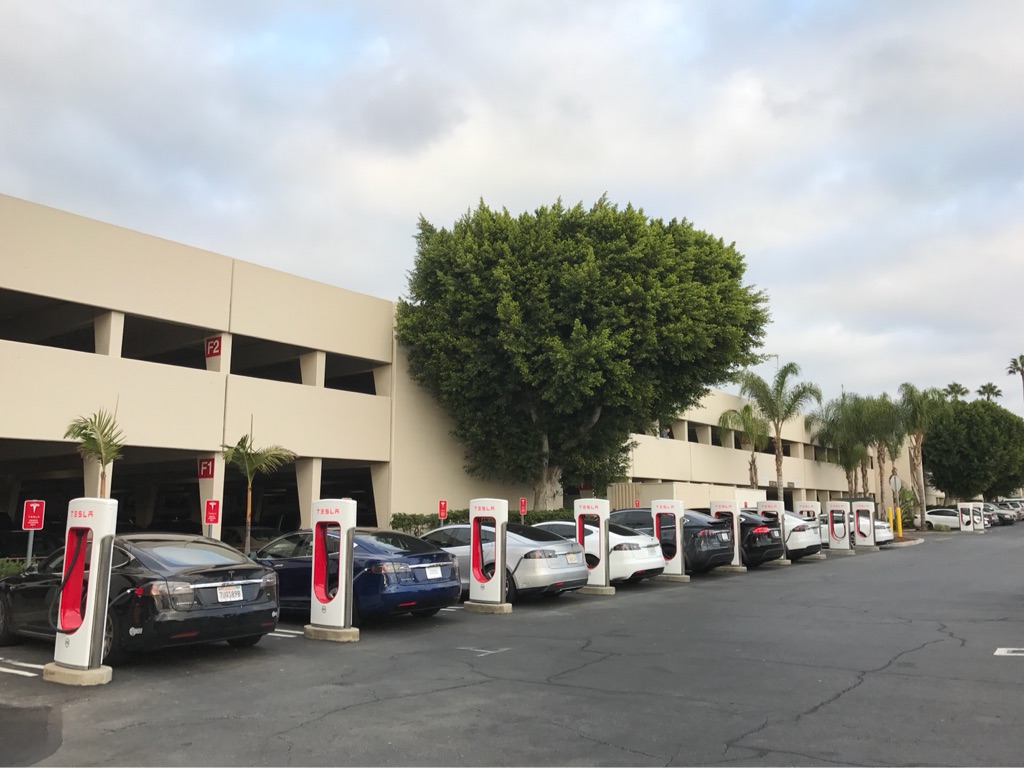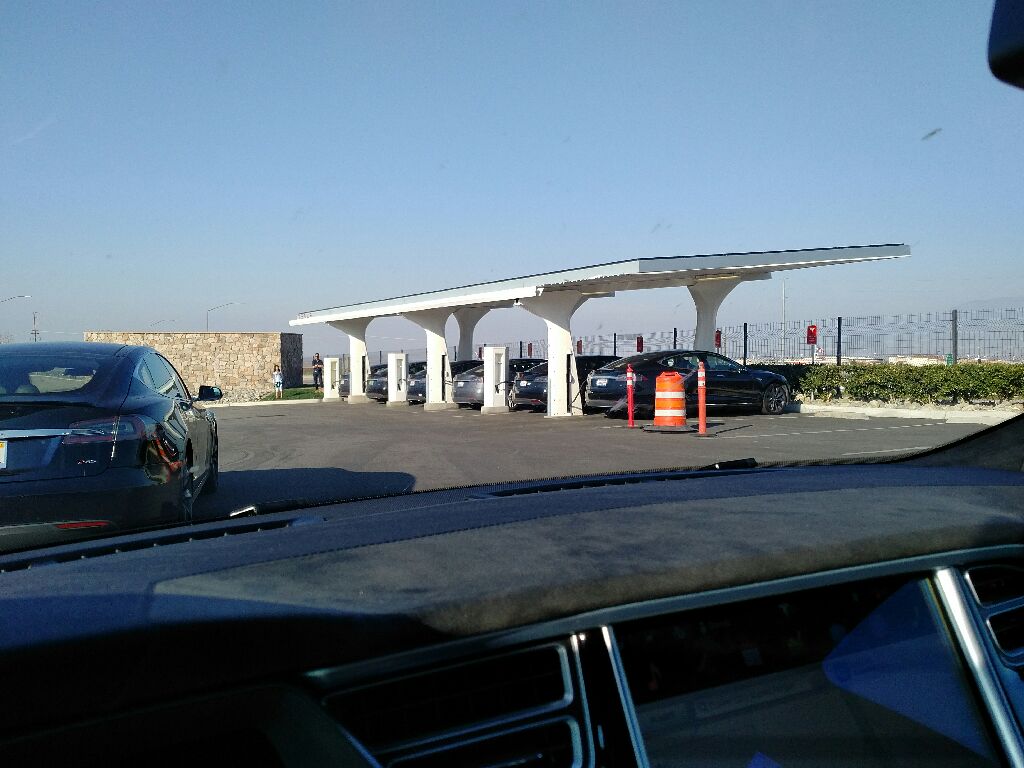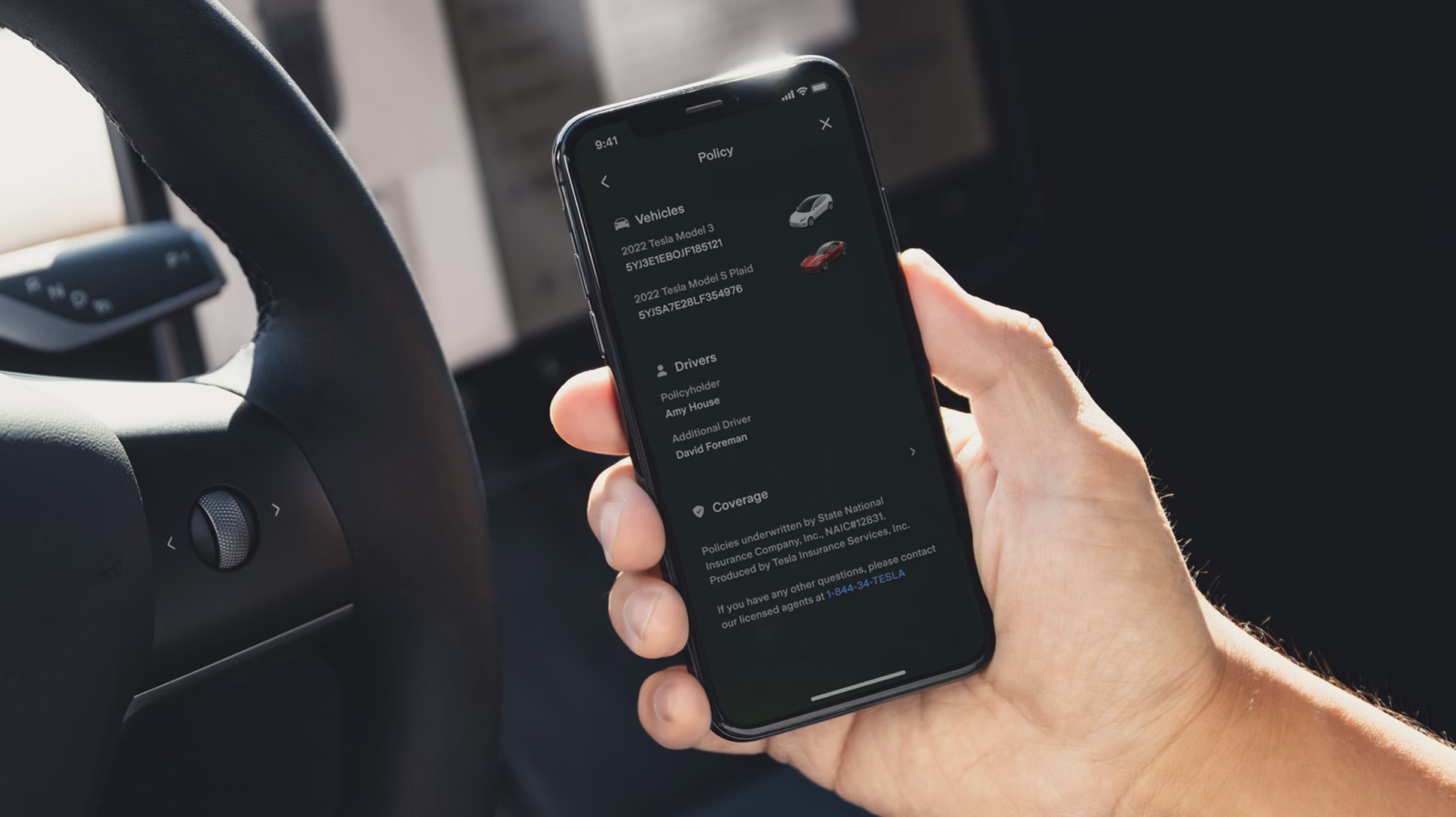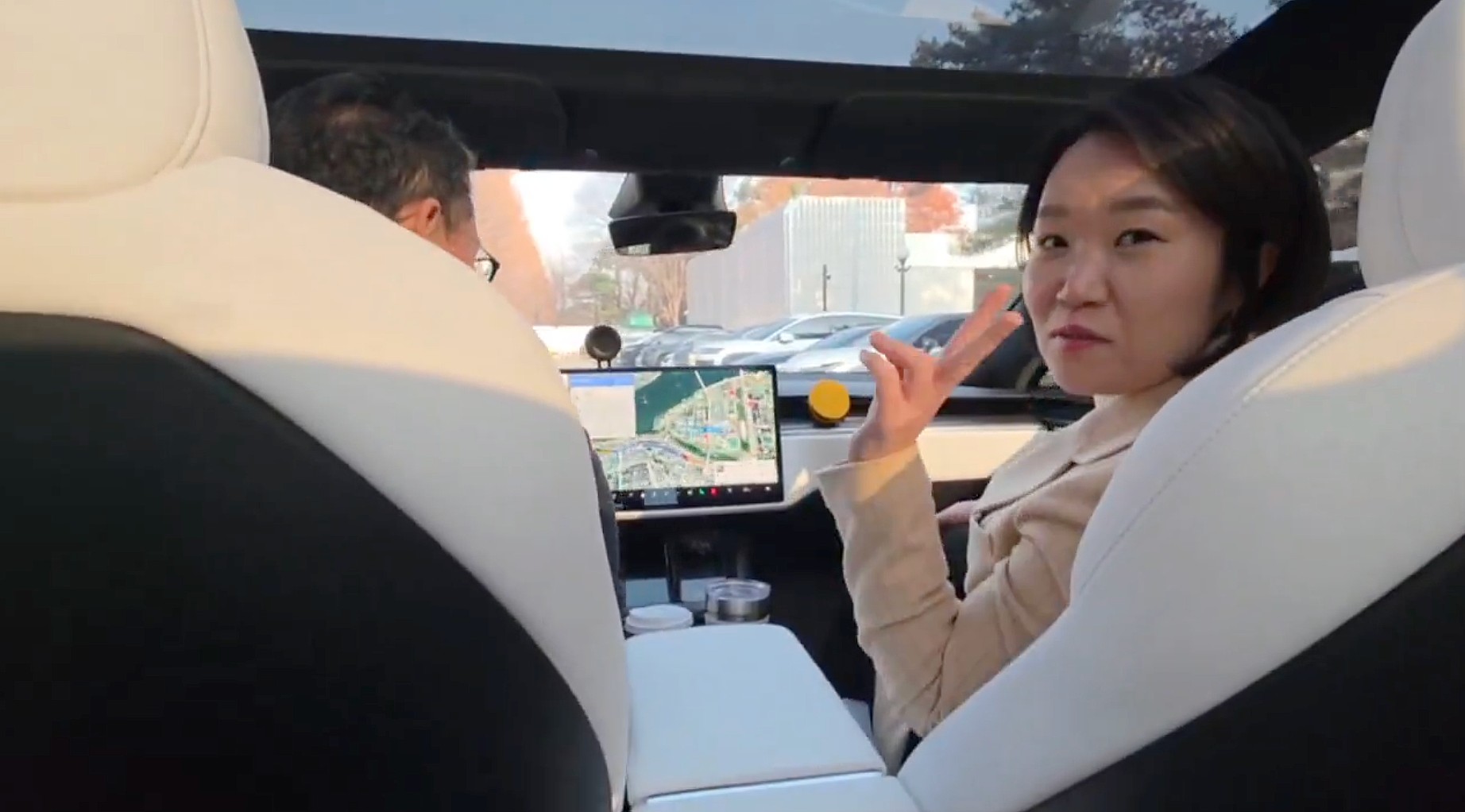News
Calling all Tesla Supercharger abusers: Don’t ruin it for the rest of us

Full house at newly opened Santa Ana, Calif. Supercharger [Credit: achen]
Model S owner and French entrepreneur, Loic Le Meur, reached out to Elon Musk on Twitter yesterday to bring to light something Tesla and its driver have been struggling to curtail – Supercharger abuse. In this particular instance, Le Meur reports abuse taking place at the popular San Mateo Supercharger station in Silicon Valley, which apparently has become home to an increasing number of Tesla owners that use Supercharger stalls as parking spaces, without charging.
Musk quickly replied back with acknowledgement of the growing “issue”, further adding that Tesla “will take action”.
You're right, this is becoming an issue. Supercharger spots are meant for charging, not parking. Will take action.
— Elon Musk (@elonmusk) December 11, 2016
California has more electric cars than any other US state with Silicon Valley leading the way in terms of EV density. According to the Center for Sustainable Energy, 7 out of every 1000 cars registered in the tech. hub area are electric so it’s not surprising the often crowded Supercharger facility in San Mateo is heavily utilized.
What can Tesla do about Supercharger abuse?
What sort of action might Elon have in mind? Tesla could begin with friendly persuasion, a tactic the company adopted 18 months ago when it sent an e-mail to Model S owners identified by the company as abusing their Supercharger privileges. “The Supercharger Network’s intent remains to expand and enhance your long distance travel while providing the flexibility for occasional needed use during local trips. Our goal is to provide the best charging experience, keeping charge times low to get you back on the road as quickly as possible. As a frequent user of local Superchargers, we ask that you decrease your local Supercharging and promptly move your Model S once charging is complete….”

Line for charging at the Tejon Ranch Supercharger [Credit: EVA_2015]
In June, Electric Jen proposed five strategies for alleviating Supercharger congestion, including dedicated express chargers with clear time limits, valet services, publishing peak usage times so people could plan their charging times more efficiently, upgrading the Tesla in-car navigation program to notify others when a car is waiting to charge, or simply building more Superchargers. With regard to that last point, Tesla is aggressively adding to the number of Supercharger locations both in the US and around the world as it prepares for the the time when production of the Model 3 begins.
Tesla has already begun staffing valet attendants at the busy San Mateo Supercharger during known busy travel weekends. They enforce a 30-minute stay time while charging. Though this approach isn’t necessarily scalable, the company can just as easily enforce a time limit for free charging. After 30-minutes of being plugged in or once the vehicle has reached a 90-100% state of charge, the vehicle owner would incur a time-based or flat rate fee.
Being billed for Supercharger use via ‘credits’ is something that the company is already planning for and could extend to preventing Supercharger abuse. “For Teslas ordered after January 1, 2017, 400 kWh of free Supercharging credits (roughly 1,000 miles) will be included annually so that all owners can continue to enjoy free Supercharging during travel. Beyond that, there will be a small fee to Supercharge which will be charged incrementally and cost less than the price of filling up a comparable gas car. All cars will continue to come standard with the onboard hardware required for Supercharging.”, said Tesla through its blog post.
Also, as Tesla’s Full Self-Driving Capability begins to take shape, the company could automatically disconnect any car that has more than a 90% charge using its automated snake-bot charging system and have the vehicle drive itself to an open parking space.
While we wait on Tesla to come up with a means to deter Supercharger abuse, we’re making this open call to all existing abusers: Don’t be an EVhole and ruin it for the rest of us.

News
Tesla dominates in the UK with Model Y and Model 3 leading the way

Tesla is dominating in the United Kingdom so far through 2025, and with about two weeks left in the year, the Model Y and Model 3 are leading the way.
The Model Y and Model 3 are the two best-selling electric vehicles in the United Kingdom, which is comprised of England, Scotland, Wales, and Northern Ireland, and it’s not particularly close.
According to data gathered by EU-EVs, the Model Y is sitting at 18,890 units for the year, while the Model 3 is slightly behind with 16,361 sales for the year so far.
The next best-selling EV is the Audi Q4 e-tron at 10,287 units, lagging significantly behind but ahead of other models like the BMW i4 and the Audi Q6 e-tron.
GOOD NEWS 🇬🇧 Tesla is absolutely crushing the UK electric vehicle market in 2025 💥
The numbers are in, and the dominance is clear. With an impressive amount of 42,270 vehicles delivered year-to-date, the brand now commands a solid 9.6% market share of the total auto market 🆒… pic.twitter.com/dkiGX9kzd0
— Ming (@tslaming) December 18, 2025
The Model Y has tasted significant success in the global market, but it has dominated in large markets like Europe and the United States.
For years, it’s been a car that has fit the bill of exactly what consumers need: a perfect combination of luxury, space, and sustainability.
Both vehicles are going to see decreases in sales compared to 2024; the Model Y was the best-selling car last year, but it sold 32,610 units in the UK. Meanwhile, the Model 3 had reached 17,272 units, which will keep it right on par with last year.
Tesla sold 50,090 units in the market last year, and it’s about 8,000 units shy of last year’s pace. It also had a stronger market share last year with 13.2 percent of the sales in the market. With two weeks left in 2025, Tesla has a 9.6 percent market share, leading Volkswagen with 8 percent.
The company likely felt some impact from CEO Elon Musk’s involvement with the Trump administration and, more specifically, his role with DOGE. However, it is worth mentioning that some months saw stronger consumer demand than others. For example, sales were up over 20 percent in February. A 14 percent increase followed this in June.
News
Tesla Insurance officially expands to new U.S. state
Tesla’s in-house Insurance program first launched back in late 2019, offering a new way to insure the vehicles that was potentially less expensive and could alleviate a lot of the issues people had with claims, as the company could assess and repair the damage itself.

Tesla Insurance has officially expanded to a new U.S. state, its thirteenth since its launch in 2019.
Tesla has confirmed that its in-house Insurance program has officially made its way to Florida, just two months after the company filed to update its Private Passenger Auto program in the state. It had tried to offer its insurance program to drivers in the state back in 2022, but its launch did not happen.
Instead, Tesla refiled the paperwork back in mid-October, which essentially was the move toward initiating the offering this month.
BREAKING: Tesla Insurance has just officially launched in Florida.
This is the first new state to receive @Tesla Insurance in more than 3 years. In total, Tesla insurance is now available in 13 U.S. states (map in thread below of all the states).
Tesla Insurance in Florida uses… pic.twitter.com/bDwh1IV6gD
— Sawyer Merritt (@SawyerMerritt) December 17, 2025
Tesla’s in-house Insurance program first launched back in late 2019, offering a new way to insure the vehicles that was potentially less expensive and could alleviate a lot of the issues people had with claims, as the company could assess and repair the damage itself.
It has expanded to new states since 2019, but Florida presents a particularly interesting challenge for Tesla, as the company’s entry into the state is particularly noteworthy given its unique insurance landscape, characterized by high premiums due to frequent natural disasters, dense traffic, and a no-fault system.
Annual average premiums for Florida drivers hover around $4,000 per year, well above the national average. Tesla’s insurance program could disrupt this, especially for EV enthusiasts. The state’s growing EV adoption, fueled by incentives and infrastructure development, aligns perfectly with Tesla’s ecosystem.
Moreover, there are more ways to have cars repaired, and features like comprehensive coverage for battery damage and roadside assistance tailored to EVs address those common painpoints that owners have.
However, there are some challenges that still remain. Florida’s susceptibility to hurricanes raises questions about how Tesla will handle claims during disasters.
Looking ahead, Tesla’s expansion of its insurance program signals the company’s ambition to continue vertically integrating its services, including coverage of its vehicles. Reducing dependency on third-party insurers only makes things simpler for the company’s automotive division, as well as for its customers.
News
Tesla Full Self-Driving gets sparkling review from South Korean politician
“Having already ridden in an unmanned robotaxi, the novelty wasn’t as strong for me, but it drives just as well as most people do. It already feels like a completed technology, which gives me a lot to think about.”

Tesla Full Self-Driving got its first sparkling review from South Korean politician Lee So-young, a member of the country’s National Assembly, earlier this week.
Lee is a member of the Strategy and Finance Committee in South Korea and is a proponent of sustainable technologies and their applications in both residential and commercial settings. For the first time, Lee was able to utilize Tesla’s Full Self-Driving technology as it launched in the country in late November.
Her thoughts on the suite were complimentary to the suite, stating that “it drives just as well as most people do,” and that “it already feels like a completed technology.”
드디어 오늘, 서울에서 테슬라 FSD 체험 했습니다.
JiDal Papa님의 모델S 협찬에 힘입어^^ 파파님 정말 감사합니다.
국회 -> 망원시장 -> 홍익대 -> 국회 복귀 코스였고요.
이미 무인 로보택시를 타봐서 그런지 신기함은
덜했지만, 웬만한 사람만큼 운전을 잘하네요.이미 완성된 기술이라고… pic.twitter.com/8pAidHBpRG
— 이소영 국회의원 (Soyoung Lee) (@im_soyounglee) December 17, 2025
Her translated post says:
“Finally, today I got to experience Tesla FSD in Seoul. Thanks to the Model S sponsored by JiDal Papa^^, I’m truly grateful to Papa. The route was from the National Assembly -> Mangwon Market -> Hongik University -> back to the National Assembly. Having already ridden in an unmanned robotaxi, the novelty wasn’t as strong for me, but it drives just as well as most people do. It already feels like a completed technology, which gives me a lot to think about. Once it actually spreads into widespread use, I feel like our daily lives are going to change a lot. Even I, with my license gathering dust in a drawer, don’t see much reason to learn to drive a manual anymore.”
Tesla Full Self-Driving officially landed in South Korea in late November, with the initial launch being one of Tesla’s most recent, v14.1.4.
It marked the seventh country in which Tesla was able to enable the driver assistance suite, following the United States, Puerto Rico, Canada, China, Mexico, Australia, and New Zealand.
It is important to see politicians and figures in power try new technologies, especially ones that are widely popular in other regions of the world and could potentially revolutionize how people travel globally.








